MY YEAR OF ZEST AND REALIZATIONS OR A YEAR IN AHAS


A QUARTZ CREATIVE ZINE DEC. 2021




4

CONTENTS Sacred Rituals 06 So What’s An Aha? 08 Signed, Sealed, Standard 10 Poetics in Motion 14 Imogen Heap and the Carbon-Neutral NFT 18 Show Off, Show Out 22 Did Katie Holmes Have a Secret Entrance to Whole Foods in Chelsea? 24 An End-Of-Day Matinee 28 Tea If By Sea, Cha If By Land 30 Tender Gestures 32 All in a Day’s Park 44 Brain Pleasers 46 Heat Map 50 5
It’s a QUARTZ kibitzing. Picture this: break from their projects collecting across Hangout dish, dispatch, and discuss ephemera they’d that week. Consider creative SHOT IN THE SOCK-KNOCKER. A



FROM THE BLUE. revelation,

SACRED
boost-bound
QUARTZ CREATIVE this: eleven teammates. projects and get together, Hangout screens to discuss the energizing they’d encountered


Consider the assembly a ARM. An inspiratory boost-bound BOLT BLUE. A recognition, a revelation, an AHA.

RITUALS
It’s just about anything that lights up a creative center in your brain. An AHA might be a reported feature that inverted your thinking, an art installation that stretched
your perspective, or a recipe that inspired a new sense of zest. AHAS can be streamed, spoken, or scrolled. They’re sensory. They’re stimulating. And they don’t just

8
So exactly
what exactly is an AHA?
spark ideas: they encourage us to attune our attention to entirely new ways of creative thinking.
AHAS invite us to search for more than just the spark. Together
we collect an electric current of project inspiration—and put words to why each new contribution is supercharging us right here and right now.
9
Signed, Sealed, Standard
As the architect of the aha, AMY PERRY can draft and diagram inspiration with an eye to every corner. For one, take her look at the NEW YORK CITY SUBWAY IDENTITY, starting with the 1970 NYC Transit Authority Graphics Standards Manual. The manual itself offers a blueprint to building and maintaining the design of the sprawling subway. But when an original copy was found in a basement locker at Pentagram’s New York offices, the discovery begot a 21stcentury reprint.
What begins as a foundational document of identity design becomes a Rubik’s cube of reissues and reconfigurations: visual artifact becomes collector’s item, collector’s


WHICH WAY USA



item becomes experiential exhibit, experiential exhibit becomes microsite. There’s the 356-page reprint assembled in Pantone spots and Italian cloth wrapping. There’s the MoMA-curated standards design gallery housed in a Midtown subway stop. There’s even the storefront dedicated to standards manuals of all sorts,
with its beginnings seeded by the MTA reissue. Every time the cube is passed into a new set of hands, it’s twisted into a new position, a new project, or a new perspective. In effect, the spins and spinoffs supply a hundred ways to remix one idea — and challenge us to consider our creative builds from at least a few other sides.

13
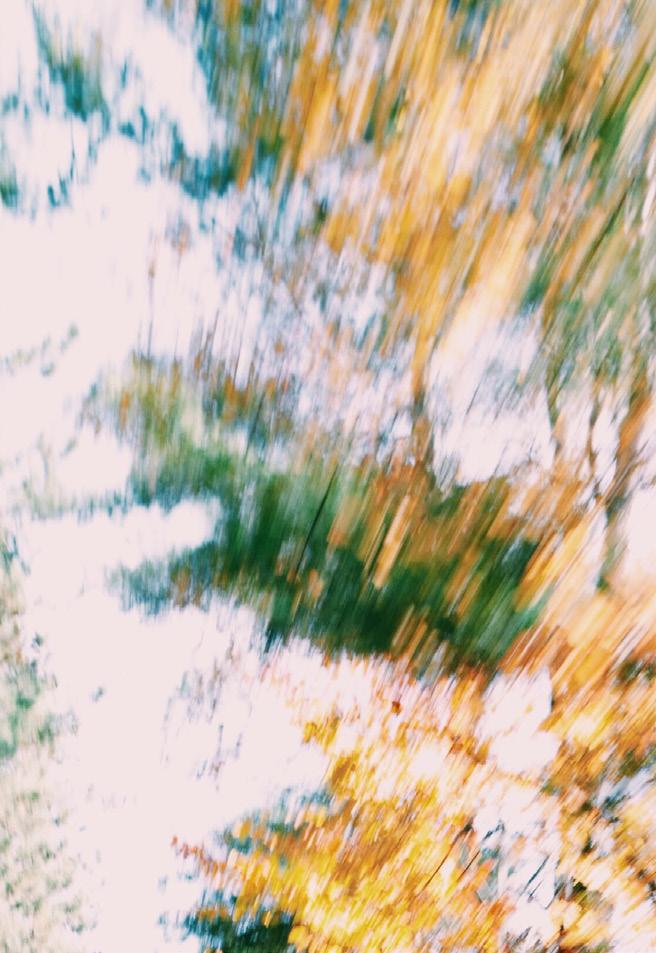
14
PHOTO BY DAVE POORE
POETICS IN MOTION
ANNA DONLAN offers ahas that use design as a processor to reimagine the potential of the works we make. Take READING MACHINES, a database of narrative snippets that scatters and twists texts into nonlinear readings. “My heart was an artichoke and I had given it to the sun,” reads one named and I still welcome you home. “I went home after a week of absence and found my cup on the table, still,” says an addition titled GUSHGUSHGUSH. “Rehydrodropic. Somelike. Margethering,” another called Neograph prints in a string. But it’s not just the words that matter in this
machine. In the database, sentences orbit in new directions, rearranging themselves into constellations entirely their own. Reading the works, you can track the centrifugal forces that pull these pieces into different orientations of displaying texts.
The project is a publishing platform for non-teleological reading, the website reads, an experiment reimagining established relationships between reader, text, and author. Exploring its stories, the reader begins to feel like an astronomer scoping the cosmos. In this universe, we’re reminded that our words can be stars.
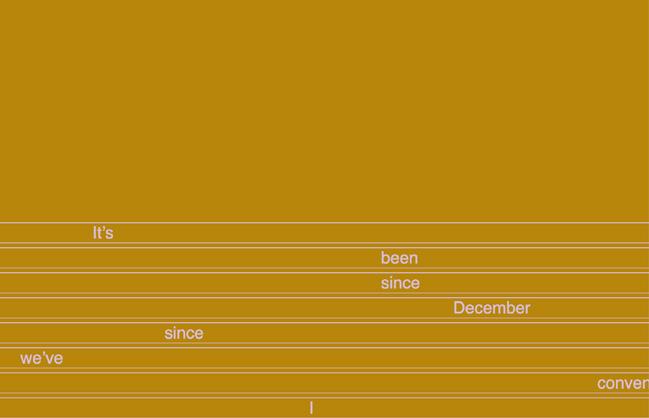
RHYTHM AND RHYME
15



RHYTHM AND RHYME 17
Imogen Heap and the Carbon -Neutral NFT
CAMILLE DANIELICH can be counted on to bring intriguing reimaginings of visual culture to a weekly aha. Look no further than this INVERSION OF THE NFT by Imogen Heap. Here’s one controversial outcome of NFT art auctions: most non-fungible tokens are bought and sold with Ethereum, a cryptocurrency that pumps in energy and pumps out greenhouse gas emissions. A counter-climate crypto coin? It complicates this new kind of cultural patronage. Which makes Imogen Heap’s NFT drop all the more notable.

GREEN
GOING




















With the release of music she titles The Firsts Collection, Heap settles among the first artists using their craft to invert the impact of crypto. Each track, an improvised song made with friends and fans on a live-jam platform, is packaged with custom visualizations and sent to the crypto market. And the result is carbon negative: Heap’s collection reinvests its profits into carbon removal via a startup named Nori. Contemplative and resolute, the project tells us that we can harness the movements of the moment — and with unconventional creative thinking, we can remake them in the image of our own values.
21 GOING GREEN
SHOW OFF, SHOW OUT

DIALOGUES AND DUOLOGUES ON ART
Cultural cognoscente and collector of glow-in-the-dark wares, CARRIE CONTA is interested in the weird and the wonderful in the world of art. So it makes sense that her aha moment is found inside the part-list-part-crit of THE BEST MUSEUM EXHIBITIONS IN NYC RIGHT NOW. It’s a roundup and rundown of the area exhibits for the season, ranging from archival libraries to snapshot factories. Displays sprawl across gardens and stretch under skylights, offering an antidote to anyone with fear of missing art.
Take The Polonsky Exhibition of The New York Public Library’s Treasures, exalting rare and rarefied items from its research halls, with displays including the only surviving letter from Christoper Columbus announcing his “discovery” of the Americas to the first Gutenberg
Bible brought across the Atlantic. Or consider Designer of Dreams, a new curation where the hallowed House of Dior hits Brooklyn’s eponymous museum. Creatures of Light explores organisms that glow, gleam, and glitter; Andy Warhol: Photo Factory salutes the pop art pioneer’s New York photo studio.
With the list of on-site shows comes an offer to explore any of the exhibits as a duo, trio, or quartet. Carrie’s invitation is an affecting reminder that ahas are inherently shareable, and not always in the retweet, repost, duet churn of the internet. Ahas are often online, sure, but they’re meant to be brought off. Done correctly, an aha is creative camaraderie, a gettogether around new thinking. Sometimes, it says, the search for inspiration begins with an extended hand.
A FUNNY THING HAPPENED ON THE WAY TO THE GALLERY
23
KATIE, BLINK TWICE IF YOU HAVE THE KEY.

24
DID KATIE HOLMES HAVE A SECRET ENTRANCE TO THE WHOLE FOODS
IN CHELSEA?

25 CELEBS: THEY’RE JUST LIKE US OOP!
You can depend on CONNER DIAL to deliver insight, intrigue, and GOSSIP with his weekly aha. Take, for one, this seminal speculative story: DID KATIE HOLMES HAVE A SECRET ENTRANCE TO WHOLE FOODS IN CHELSEA? The piece, a cult classic from the high and holy home of all things scuttlebutt — Old Gawker, obviously — manages to be both critic of and gleeful participant in the raging media gossip machine of the mid-aughts. Haven’t you seen the swarms of cameramen who regularly attached to starlet’s cars around Nobu in 2009? Come on. We know you did. We all watched at least two Free Britney docs this year.
Consider the paparazzi a young star’s Scylla, a multi-headed monster that made up the early2000s celebrity coverage complex. In our metaphor, Katie Holmes is our rugged Odysseus, except the heads of the creature she’s battling are named TMZ, Us Weekly, and the Daily Mail. And her Charybdis
is Whole Foods. It’s a rock and a hard place, if the rock also offered garden-fresh avocados from Monterey.
The only outlet brave enough to chronicle Katie’s treacherous journey to procure a little cashew milk for her morning macchiato, while also somehow kind of being one of the monsters at sea? Gawker, obviously. Enter DID KATIE HOLMES HAVE A SECRET ENTRANCE TO WHOLE FOODS IN CHELSEA?
( DKHHASETWFIC ): an obsessive, demi-deranged deep dive into the Scientology escapee’s mysterious appearances in and out of her grocery store of choice. Deploying blind items and consulting engineering blueprints, spinning off wild conspiracies and concocting crazed conjectures, the story serves as evidence that no creative rabbit hole is too deep, especially if you’re completely committed as you make the journey down. You may even arrive at a security door that opens to all of your answers.
26
CELEBS: THEY’RE JUST LIKE US



27
An End-Of-Day Matinee
GABRIELA RICCARDI considers ahas that render art in the world around us. One example: APPLAUSE ENCOURAGED, a naturalistic immersion - slashperformance piece that asks us to re-listen to the rhythms of the wild.
The piece surfaces in How To Do Nothing, Jenny Odell’s treatise on resisting what’s termed the attention economy. To her, we need to reclaim our attention from the forces of technocratic capitalism; that reclamation can be found in place-making, and especially placemaking in nature. So it’s no surprise that Odell, an artist based in the Bay Area, cites a number of Californian pieces in her work.
It’s here that she invokes Scott Polach’s Applause Encouraged, an art piece perched upon a clifftop in San Diego. On the evening of the performance, attendees arrived to a red-rope stanchion and an arrangement of folding chairs lined up like an orchestral floor for eight. After being directed to their seats, the audience sat for forty-five minutes to watch the
sun set. When the last of the light dropped below the horizon, they applauded. That was the performance; this was the show.
Encountering the piece, one can begin to imagine a radical reorientation of what in the world we might call a creative work. Perhaps the extraordinary can be found in the rhythmic and the routine. Perhaps nature itself is a work worth recognizing.
The piece offers a magic to be discovered in mere observation. Once roused to attention, you can’t help but find art in counting the petals on a front-yard flower or contemplating the azure of the sky. You’ll find it in plucking a leaf from your path and inspecting it, really inspecting it, tracing the rivets and rivulets of its veins. You’ll find it in the flicker of a flame or the drift of a stilled sea. Creative works are embedded, Applause Encouraged suggests, in the circadian cycles of living. Attune your ear to their humming, and you may be stirred to the sounds of a show.
THE HORIZON
BEYOND




30
PHOTO BY AUSTIN NEILL
TEA IF BY SEA, CHA IF BY LAND
HARSHA VENKATASH surfaces striking reports, more-you-knows, and just about any data that can be charted for kicks. So it’s no surprise that for one of his weekly ahas, he pulled one of the more fascinating global guides out of the Quartz archives like a Vespuccian discovery. TEA IF BY SEA, CHA IF BY LAND traipses the globe to track down the reasons why most of the world has just two words for tea. The story becomes a fascinating trek along the intersection of etymology and cartographics. And ultimately, it traces how lines of movement shape language and leave their lingering impact in the ways we encounter expression.
Across most of the world, the story says, only two words are used as the
foundation for the hot drink you steep. There’s tea, and there’s cha. So why’s that? In short, both words spread outward from China. But by following the origins of centuries-old trade routes, you’ll find the key: the names that resemble “cha” spread across land, along the Silk Road, while the ones that echo “tea” spread over water, by Dutch traders bringing the novel leaves back to Europe.
Mapping movements as data points, the story charts how languages can be shaped — and how histories can be shared. And with a little creative probing, it suggests, we can consider the connections that travel between ourselves and others we once thought outside of our reach.
ALL ABOARD
31
Tender Gestures
JULIA HANSON tosses down tender ahas like little letters of recommendation. Take A PHOTOGRAPHER’S PARENTS
WAVE FAREWELL, a generous photo series by Deanna Dikeman that chronicles the end of her visits to her parents over the years. The portraits are stirring snapshots of her parents’ sendoff. There they stand in the driveway, shoulder to shoulder, arms raised up in gallant goodbye. There they lean into the window, smile wide, looking like they could reach right into the lens and pull you from the car. “Each image reiterates the quiet loyalty of her parents’ tradition,” critic Eren Orbey writes in the New Yorker. “They recede into the warm glow of the garage on rainy evenings and laugh under the eaves in better weather. In summer, they blow kisses from the driveway. In winter, they wear scarves

UNTIL WE MEET AGAIN
 PHOTOS BY DEANNA DIKEMAN
PHOTOS BY DEANNA DIKEMAN

34
PHOTOS BY DEANNA DIKEMAN
and stand behind snowbanks. Inevitably, they age.”
Tracing time through the photos, their viewer sees seasons shift. Faces soften, settling into gentle folds. You can mark the years from the ephemera in the frame: the nineties nylon jacket bracing against the wind in one photo, the earlyaughts flip phone bulging from a breast pocket in another. But the protagonists remain the same. The same cherry board-and-batten home recedes in the background, soon to be subsumed in a motion blur. The same trimmed lawn rolls out to the street, a concrete driveway trailing beside. The same affectionate people lift their hands in salute. Eventually, one figure disappears from the frame. Eventually, the other is found indoors, surrounded by a new home, sitting under the glow of a lilting lamp in her retirement facility.
Taken together, the series forms a longitudinal study in love. Care, it says, can be contained in a frame: a wave, a gesture, a refusal to turn away. And it offers us an important lesson in creativity, too: that we can make works in the small moments, and find big feelings there.
35 UNTIL WE MEET AGAIN


36


37



40

41


Brain Pleasers
“I don’t read it since most of it goes WAY over my head,” TARA MALLEN writes of QUANTA MAGAZINE. “But I appreciate the beautiful illustrations.” There’s plenty more to appreciate in this little micro-press mag, too. Tara serves up quirky, curiosityquenching ahas, from Instagram comics to wild and wacky hotels. But Quanta, frankly, is a fountain of originality.
On its face, Quanta is a science publication with verticals across physics, mathematics, biology, computer science, and more. The pub’s interested in the particulars

PUZZLE IT OUT
46

ART BY MAGGIE CHIANG FOR QUANTA MAGAZINE
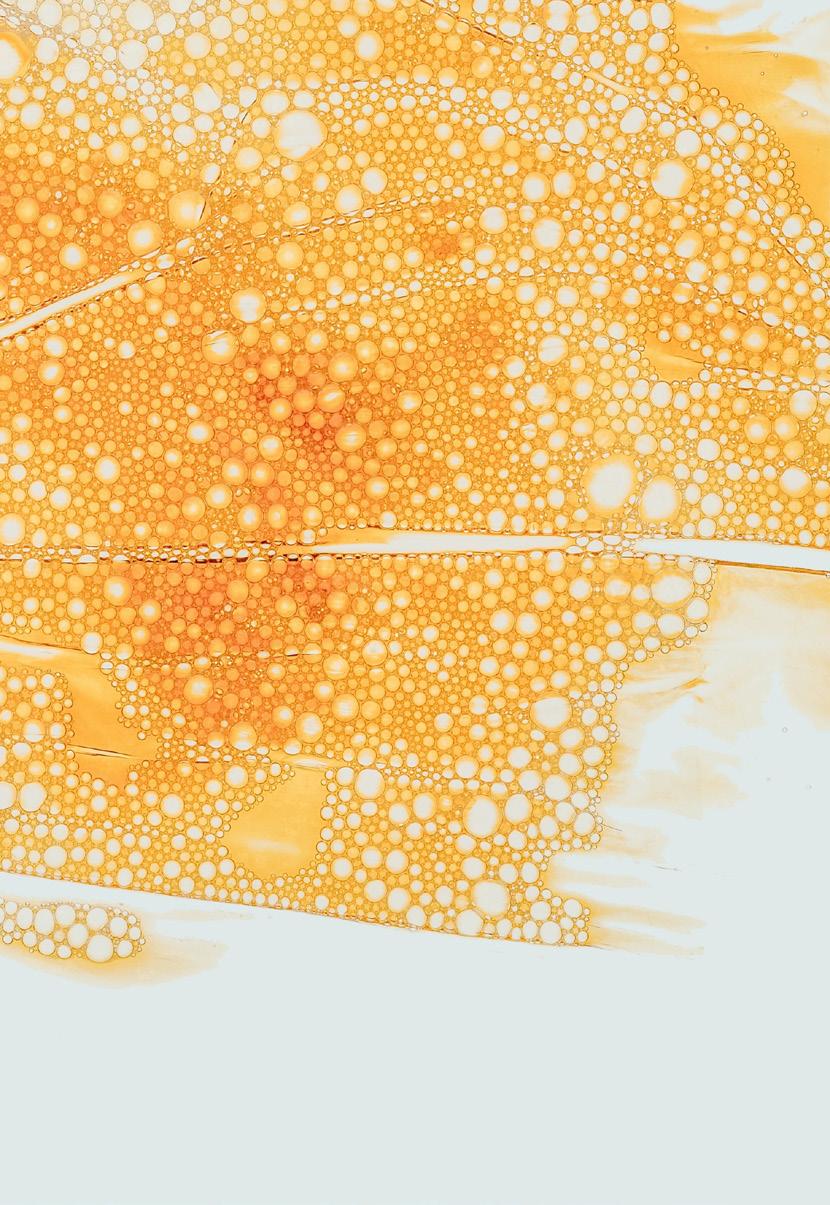
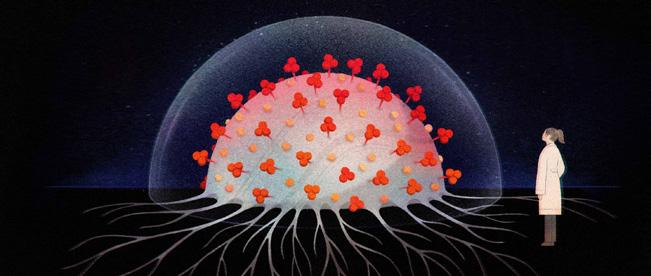
48
of particles and gestures at conjecture. Perusing its pages, you’ll find aggregations of integers, schemes and schemas, mathematical proofs and mechanical laws. Honestly, how much of this did we actually cover in AP Bio? Stories greet you with close-ups of sea sponge genes and guesswork on geometric puzzles. And the content lends a crash course in the cosmos, a studied survey of phenomena on the microscopic scale. To the laywoman’s eyes, Quanta’s premises offer more questions than answers. What exactly are wavelets? Who’s a biased polynomial? And since when could a number be, as one headline suggests, transcendental? If we can be truthful, it’s more than just numbers that transcend here.
SURPRISING LIMITS DISCOVERED IN QUEST FOR OPTIMAL SOLUTIONS!, the magazine trumpets. NEW MATH BOOK RESCUES
LANDMARK TOPOLOGY
PROOF! ‘IMPOSSIBLE’ PARTICLE DISCOVERY ADDS KEY PIECE TO THE STRONG FORCE PUZZLE! There are a lot of puzzles, actually. Numerical, neutrino, Newtonian: scroll away, then try to figure out what any of them mean.
“Our work often resembles journalistic alchemy — we mash together the complexities of science with the malleable art of storytelling in an attempt to forge a precious new alloy,” the editors write on their manifesto of an About page. “It can be a mind-bending enterprise, but we relish the challenge.” Amidst the bends and the malleations, we’re reminded of the surprise you can find by stretching your mind a little further into the abstruse. There’s creative pleasure to be discovered with a reach.
49 PUZZLE IT OUT

50
PHOTO BY F. ROY KEMP
HEAT MAP
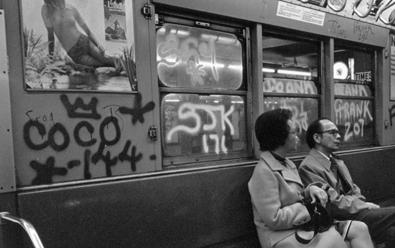
51 SPARKS FLY ON THE SUBWAY ON THE MOVE
“Fifty percent of humanity is visually oriented, [and] fifty percent is verbally oriented. Visually oriented people have no problem with any kind of map. Verbal can never read a map, but they have one great advantage over the visual people — they can be heard,” the late and great designer Massimo Vignelli says in the film Helvetica. “And that’s why the MTA changed this map.”
Such is the controversy that TOM HOUSE curates for his weekly contribution, and another MTA matter that bookends our year in ahas. Tom brings design debates and eye-popping viz to the virtual table. And RELIVING THE NEW YORK SUBWAY MAP DEBATE delivers on both: the episode is design lightning in a bottle.
Here’s how the story goes: in the spring of 1978, modernist designer Massimo Vignelli and his cartographer critics threw down a duel. The scene was a public debate on the future of the New York City subway map, designed first by Vignelli. Taking the stage in Cooper Union’s Great Hall, the designer was working in vain to defend his
blocky, angular layout, with the prototypical version already in circulation throughout the system. On the other end of the stage stood a more pragmatic-minded mapper: John Tauranac, then the chairman of the New York Metropolitan Transit Authority’s map committee. Tauranac and his cohort believed that the design distorted the city’s geography in a disservice to riders. While Vignelli advocated for the principles of design clarity, Tauranac countered with the public obligations to accuracy and detail.
Onstage, Vignelli knew he was fighting a changing philosophical tide — and indeed, his map would soon be phased away from public use. But the showdown lived for years in design disciplinary lore. And today, it offers more to be learned.
Trafficking at the intersection of the theoretical and the pragmatic, the story is a case study for how creative philosophies can be fought for and fought over — and that passion can push you forward. Sometimes the best way to start a spark is with a little heat.
52
SPARKS FLY ON THE SUBWAY

53
THE VIGNELLI MAP
A ZINE
BY GABRIELA RICCARDI



























































 PHOTOS BY DEANNA DIKEMAN
PHOTOS BY DEANNA DIKEMAN


























